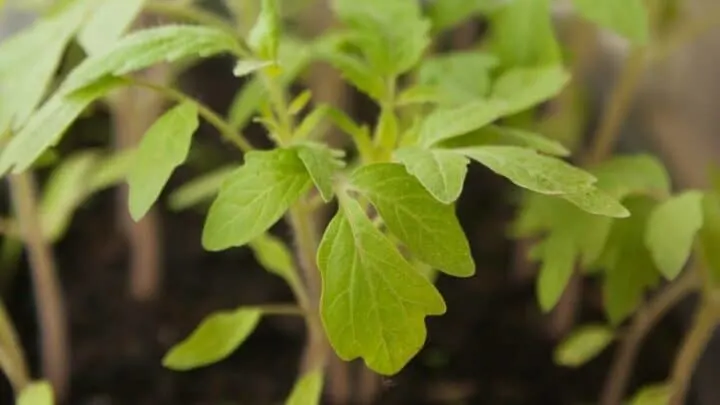If you have managed to get your tomato seedlings to grow into fully-fledged plants then well done!
You have overcome many of the initial problems that can affect seedlings, such as transplant shock or early blight.
Now comes the fun part – growing big juicy tomatoes!
But sometimes the growth can stall or seem slow. Don’t get frustrated and find out here what you can do to speed things up.
Table of Contents
Why are my tomato plants growing so slowly?
Slow growth in your tomato plants is usually caused by either water or soil issues. Make sure you neither overwater or underwater your plants. Check your soil is well-draining and of slightly acidic pH. And make sure to never expose your tomato plants to frost as this can stunt or delay growth.
Reasons behind the slow-growing of your tomato plants
Underwatering
The most common and likely reason for growth problems with an otherwise healthy plant is watering – either over or underwatering.
Mature tomato plants need plenty of water. In fact, their roots can go pretty deep, so you need to make sure they are being nourished with plenty of moisture.
Without it the plant cannot pull nutrients out of the soil and as a result will not grow to its full potential.
Look out for early signs of underwatering which include yellow leaves, dry soil, and wilting.
To rectify the matter make sure you adopt a regular watering schedule.
Since the roots of the plant go so deep – up to 2 meters in outdoor kept plants – it is better to water them every few days with a significant amount of water rather than a little every day.
Overwatering
If your soil is not well-draining or your plant is exposed to too much water, this too can stunt the growth of the plant.
Excessive watering over time leads to root rot. This is a fungal disease attacking your tomato plants’ root system brought about by a damp environment.
At its worst, the roots can no longer absorb water or nutrients from the soil and thus experience stunted or slow growth.
Unlike under watering, which can usually be rectified by picking up your watering schedule, root rot is hard to reverse and is usually fatal.
Prevent it by making sure you have well-draining soil – it should be more sandy than clay – and that you do not overwater the plant.
Exposure to low temperatures
Tomato plants have a range of varieties, some that are hardier than others and suitable for colder climates.
No matter what variant you have picked, however, temperatures below 55 degrees Fahrenheit are a no-no.
In such conditions, tomato plants cannot create enough energy to grow.
If you plant outdoors, make sure the danger of frost and low temperatures has long passed.
In particularly cold environments it is better to use a greenhouse or start off the seedlings in pots in your home before moving outdoors when the weather begins to heat up.
Incorrect soil pH
Whilst it is important to make sure the soil is well-draining, it is just as critical to pay attention to the pH of your potting mix.
Find a pH that is around 6 to 6.8. This is slightly more on the acidic side, which is needed to ensure the plants can take sufficient nutrients from the soil.
You can buy test kits specially made to measure the pH levels of the soil online.
Note too that the minerals in your soil can also play a big role in how fast your tomato plant grows.
Higher nitrogen content for example promotes lush green leaves and tall stems – but the plant will do this at the expense of big juicy fruits.
And if your soil type has a particularly dominant mineral – for example, magnesium – this can prevent the plant from accessing other less dominant but equally important minerals.
Frequently Asked Questions about Why Are My Tomato Plants Growing So Slowly
I water my tomato plants every day. Why have they stopped growing?
Make sure you are not overwatering your plants – this can cause root rot, which can lead the plant to stop absorbing essential nutrients needed for growth
What can I do to the soil to make my tomato plants grow faster?
You should buy a soil test kit to check the pH levels of the soil – a slightly acidic environment is preferred. You may also be able to research the soil properties in your area if you are planting directly into the ground and then compensate for poorly represented minerals.

Daniel has been a plant enthusiast for over 20 years. He owns hundreds of houseplants and prepares for the chili growing seasons yearly with great anticipation. His favorite plants are plant species in the Araceae family, such as Monstera, Philodendron, and Anthurium. He also loves gardening and is growing hot peppers, tomatoes, and many more vegetables.


